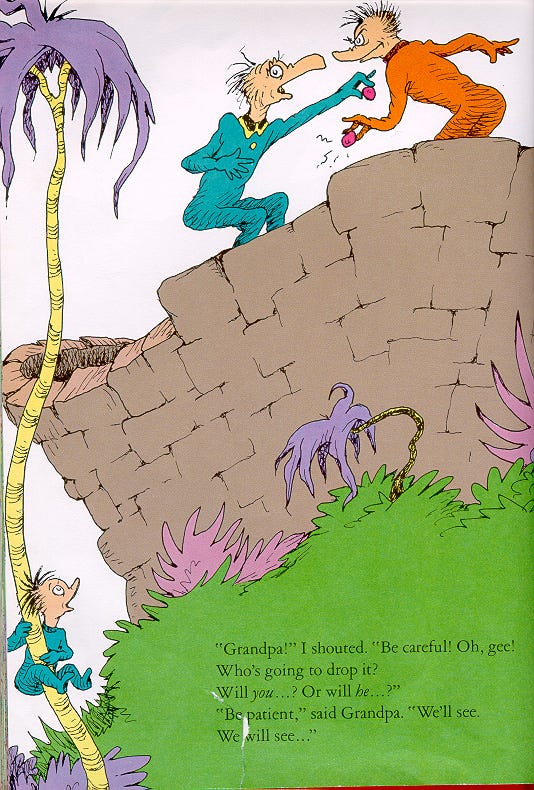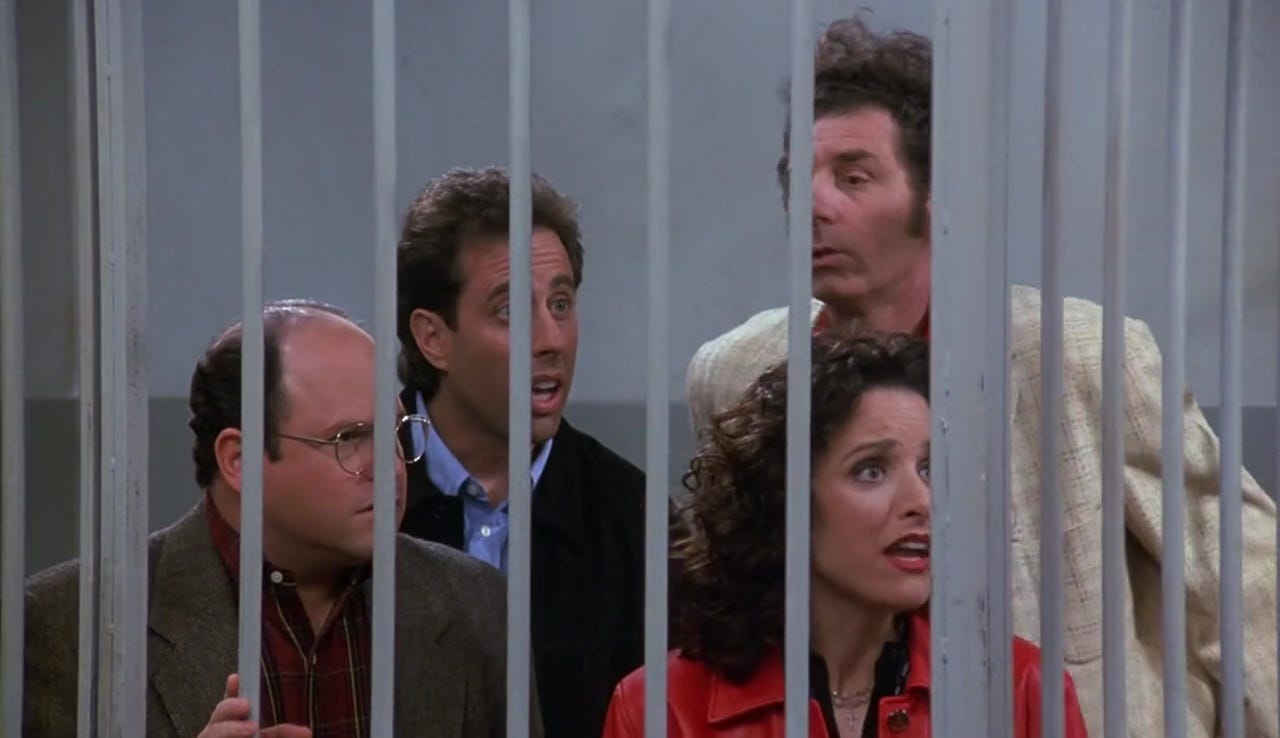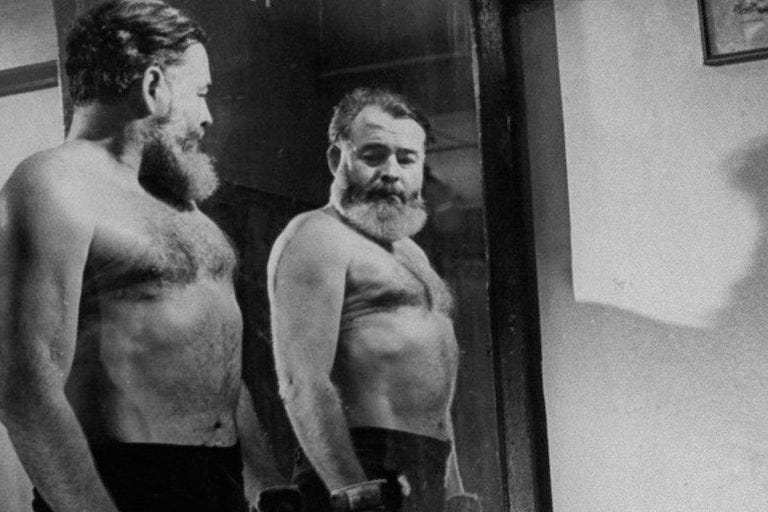This post is for writers, but it’s for readers, too. Bear with me.
In 2012, I gave a craft class on endings. I made a pretty big handout for it. Every time I’ve given this talk in the years since, the handout has grown, and it is now over 20 pages long. But it’s also my most requested handout (as in, people will email and say “someone told me you had this handout on endings…”) and so I’ve decided to make it public in perhaps a more helpful way.
This is the first in a series of posts about wrapping up stories and novels (and creative nonfiction, too), and about my attempt at a sort of taxonomy of endings. While I developed this whole thing for writers, it should be fun for readers, too, and a way to think about why you liked or disliked the way something ended (beyond “it just wasn’t satisfying”).
First, a note about all of this:
It’s ridiculous to try to put endings in categories, as I’ve done. A truly great ending will sometimes fit three or four of these categories, plus invent its own category – something that’s never been done before. These are simply to get you thinking about your own endings and about the ones you adore. These are descriptors, not categories a writer must choose from.
Okay, so here we go.
Today we’ll talk about…
Open Endings vs. Closed Endings
All endings are basically either closed or open; we either know how all the conflicts were resolved, and how all the characters ended up, or we don’t. And of course an ending could be mostly open or mostly closed, with some threads left hanging.
The Closed Ending:
All the loose ends are tied up. We’re certainly free to imagine the next day, but we are left with no big questions.
Consider the ending of every Shakespeare play. Characters are dead, rewarded, or punished; they’re paired off in marriage; they’re exiled; they’re freed. Everyone is accounted for, and although there might be ongoing action (here comes Fortinbras’s army) we do not leave the theater with unresolved plot questions.
The Open Ending:
Truly open endings are ones that leave all readers with the same questions; these are the kind of narratives that beg the reader to complete the story on her own.
In some cases, the possibilities are endless. I think of these as Broadly Open Endings. From Nabokov’s story “Signs and Symbols” (when—to oversimplify—a couple is waiting on news of their suicidal son, and the phone keeps ringing with a wrong number, and the husband is reading the labels on jam jars):
He had got to crab apple when the telephone rang again.
Here, any number of things might happen, and the phone ringing might mean just about anything, including nothing.
Others leave us with one or two possibilities, often a decision to be made. I think of these as Forked Open Endings. From Dr. Seuss’s The Butter Battle Book, about, basically, a nuclear war that starts over toast; the “it” here is a bomb:
“Grandpa!” I shouted. “Be careful! Oh, gee! Who’s going to drop it? Will you…? Or will he…?
“Be patient,” said Grandpa. “We’ll see. We will see…”
Another example would be Alice Munro’s short story “To Reach Japan.” Harris is the man Greta has traveled (with her child) to have an affair with—although that looks less likely than it did a few pages ago. They’ve just gotten off the train, and she sees him:
Harris.
First a shock, then a tumbling in Greta’s insides, an immense settling.
She was trying to hang on to Katy but at this moment the child pulled away and got her hand free.
She didn’t try to escape. She just stood waiting for whatever had to come next.
And finally, there are open endings that really do point us in a particular direction before leaving us to our own devices. You could think of this as a song that’s cut off before it resolves back to the tonic – but we know the only note it could end on. We could call these Directed Open Endings.
From Colson Whitehead’s Apex Hides the Hurt, in which the main character’s infected toe (really) has been an ongoing symbol for his anger and discontent:
There had been a moment a few hours ago, as he was lying in bed waiting for the morning to come, when he thought he might be cured. Rid of that persistent mind-body problem. That if he did something, took action, the hex might come off. The badness come undone. He thought, plainly speaking, that he’d lose the limp. Nothing as dramatic as the cripple flinging his crutches into the air before dashing himself to the floor and break dancing, but still. Something, anything.
As the weeks went on and he settled into his new life, he had to admit that actually, his foot hurt more than ever.
Another example: At the end of the movie Her, two characters are left alone on a rooftop, and it seems inevitable that they’ll get together romantically—even though neither has taken a step in that direction.
Some Other Ways to Play with Open vs. Closed Endings
Stasis:
Stasis is the intentional lack of resolution. We are leaving things exactly as they are, mid-conflict.
From Anton Chekhov’s 1899 story “The Lady with the Pet Dog” (a man and woman, both married to others, have fallen in love; they have been talking in a hotel):
Then they spent a long while taking counsel together, talked of how to avoid the necessity for secrecy, for deception, for living in different towns and not seeing each other for long at a time. How could they be free from this intolerable bondage?
"How? How?" he asked, clutching his head. "How?"
And it seemed as though in a little while the solution would be found, and then a new and splendid life would begin; and it was clear to both of them that they had still a long, long road before them, and that the most complicated and difficult part of it was only just beginning.
(This might look more like an open ending, but at least my reading, there’s no hope that these people are actually going to take action.)
A warning, though: This kind of ending is really, really hard to pull off. Since Chekhov did it, it’s been used as a copout by thousands of writers, many of them undergraduates, who can’t pull the trigger on a resolution. Nothing screams “I ran out of ideas!” like stasis done poorly.
What works better, to our modern sensibilities, tends to be stasis of character—the realization, at the end, that although the world has changed, our character has learned absolutely nothing. Think of the end of Seinfeld.
The Ambiguous Ending:
As opposed to an open ending, an ambiguous one doesn’t leave us wondering what’s going to happen next, but what exactly is happening (or has happened) right now, on the page.
There are a couple of varieties:
Emotional Ambiguity
We know what’s literally happening, but aren’t sure of the emotional impact/import for the characters; perhaps we wonder if they’re telling the truth.
From Caitlin Horrocks’ “The Sleep,” about a town that starts hibernating. Here, they’re being interviewed for the news:
“I barely remember what our life was like before. I remember being cold.”
“And now?”
Dee looked baffled, not able to find words sufficient to explain half her life, the happier, more perfect half. The camera turned to Al, but his face was unreadable. “Now?” Dee said. “Now I guess we’re not.”
Now we are the people of Bounty, the farmers of dust and cold, the harvesters of dreams. After the lumber, after the mines, after the railroad, after the interstate, after the crops, after the cows, after the jobs. We’re better neighbors in warm beds than we ever were awake. The suckers of the last century, but not this one.
Ambiguity of Action
We leave things ambiguous as to what has actually happened – i.e., Did he just shoot her, or is he hallucinating? I guess we’ll never know… This is nearly impossible to do well.
One of the only times I’ve seen this work is in Charlotte Bronte’s Villette – and only because the narrator is refusing to tell us something we can already intuit. Here, the narrator’s new husband is finally sailing to be with her after three years of waiting:
That storm roared and frenzied for seven days. It did not cease till the Atlantic was strewn with wrecks: it did not lull till the deeps had gorged their full sustenance. Not till the destroying angel of tempest had achieved his perfect work, would he fold the wings whose waft was thunder – the tremor of whose plumes was storm…
Here pause: pause at once. There is enough said. Trouble no quiet, kind heart; leave sunny imaginations hope. Let it be theirs to conceive the delight of joy born again fresh out of great terror, the rapture of rescue from peril, the wondrous reprieve from dread, the fruition of return. Let them picture union and a happy succeeding life.
Madame Beck prospered all the days of her life; so did Pere Silas; Madam Walravens fulfilled her ninetieth year before she died. Farewell.
Another example: We could probably debate the ending of The Sopranos all day.
Some Other Ways to Address Resolution
The Intrinsic Ending (a final, decisive act or event):
Someone does something so final and drastic (or something so final and drastic occurs) that the story has to be over. This often is part of a closed ending, but not necessarily.
From Virginia Woolf’s To the Lighthouse:
She looked at the steps; they were empty; she looked at her canvas; it was blurred. With a sudden intensity, as if she saw it clear for a second, she drew a line there, in the center. It was done; it was finished. Yes, she thought, laying down her brush in extreme fatigue, I have had my vision.
From Ernest Hemingway’s A Farewell to Arms (Catherine is the love of his life; this has been their love story):
It seems she had one hemorrhage after another. They couldn’t stop it. I went into the room and stayed with Catherine until she died. She was unconscious all the time, and it did not take her very long to die.
[He talks to the doctor for just a few lines.]
But after I had got them out and shut the door and turned off the light it wasn’t any good. It was like saying good-by to a statue. After a while I went out and left the hospital and walked back to the hotel in the rain.
A warning: It’s very tempting just to show the final action and not its impact. But you can’t end a story at the climax; you need some denouement, even if you’re Hemingway. Even Hemingway’s Frederic Henry needs his moment of walking back to the hotel in the rain. In other words... when you throw a rock in the pond, the ripples are often more interesting than the splash. Also: It’s very hard to pull off a death as a final action, unless you’re Hemingway. Also keep in mind: None of us is Hemingway.
Other Examples: John Updike’s “A&P”
The Breakup:
A tricky, unusual one. The narrative voice moves away from the characters. We are not only resolving the conflict, but leaving the story behind.
Either the story is over because we don’t know those people anymore…
From F. Scott Fitzgerald’s Tender is the Night:
His latest note was post-marked from Hornell, New York, which is some distance from Geneva and a very small town; in any case he is almost certainly in that section of the country, in one town or another.
or because the narrator has moved on…
From Junot Diaz’s “Nilda”:
We never spoke again. A couple of years later I went away to college and I don’t know where the fuck she went.
or because the narrator is kicking us out of the story now. We’re not allowed to listen anymore.
From Jonathan Lethem’s Motherless Brooklyn:
I can’t feel guilty about every last body. Ullman? Never met the guy. Just like Bailey. They were just guys I never happened to meet. To both of them and to you I say: Put an egg in your shoe, and beat it. Make like a tree, and leave. Tell your story walking.
Other Examples: John Updike’s Couples, Mary Shelley’s Frankenstein
The Self-Conscious Ending:
This ending acknowledges that you’ve been listening to a story, and now the story is done.
From Iris Murdoch’s The Philosopher’s Pupil:
The end of any tale is arbitrarily determined. As I now end this one, somebody may say: but how on earth do you know all these things about all these people? Well, where does one person end and another person begin? It is my role in life to listen to stories. I also had the assistance of a certain lady.
Other examples: Don Quixote; Italo Calvino’s If on a winter’s night a traveler
Next time…
This was installment #1… After I posted it, I posted five more installments; I’m editing this later (in June!) to link to them below.
When the ending relies on the structure of the whole:
Let's End Things (Part 2)
Last week (for writers and readers both), I started sharing part of my ginormous handout on endings, the one I’ve stopped printing for students because of the significant deforestation effect. If you haven’t read Part 1, start there and then join us back here for Part 2. (That would be part 2 of
Endings that address meaning:
Let's End Things (Part 3)
For both readers and writers, I’ve been sharing part of my ginormous handout on endings, piece by piece. Here’s Part 1, and here’s Part 2… And here is Part 3, talking about endings and the ways they address meaning. We’re heavy on Annie Proulx this time.
Endings and sound:
Let's End Things (Part 4)
For both readers and writers, I’ve been sharing part of my ginormous handout on endings, piece by piece. Here are Part 1, and Part 2, and Part 3 (although you really don’t have to read them in order). Today we’re talking about the way sound works at the end of a piece of prose. When I end something, I switch from thinking like a fiction writer to thinki…
Endings that shift lenses:
Let's End Things (Part 5)
For both readers and writers, I’ve been sharing my ginormous handout on endings, piece by piece. Here are Part 1, and Part 2, Part 3, and Part 4 (although you don’t have to read them in order). Today, let’s talk about endings that play with a major
Endings that deal with time:
Let's End Things, Part 6
This is FINALLY the last post in the series... And it’s my favorite part. For both readers and writers, I’ve been sharing my ginormous handout on endings, piece by piece. Here are Part 1, and Part 2, Part 3, Part 4, and Part 5 (although you don’t have to read them in order).


















“The most authentic endings are the ones which are already revolving towards another beginning”
—Sam Shepard
“I hate endings. Just detest them. Beginnings are definitely the most exciting, middles are perplexing, and endings are a disaster.”
--SamShepard
I left a comment (a question) about endinng that I don't think was spoiler alerty, but I don't even want to tread close to the possibility, so I deleted it. (I thought you had to approve these comments, but I think I was thinking about Courtney's substack.) I'll just ask you when I see you at the L.A. Bookfest.
Helpful post. Ending in screenplays are even more treacherous, I think. It's amazing how many movies we are fans of, and we can't quite remember the endings, though. Or maybe that's just me.